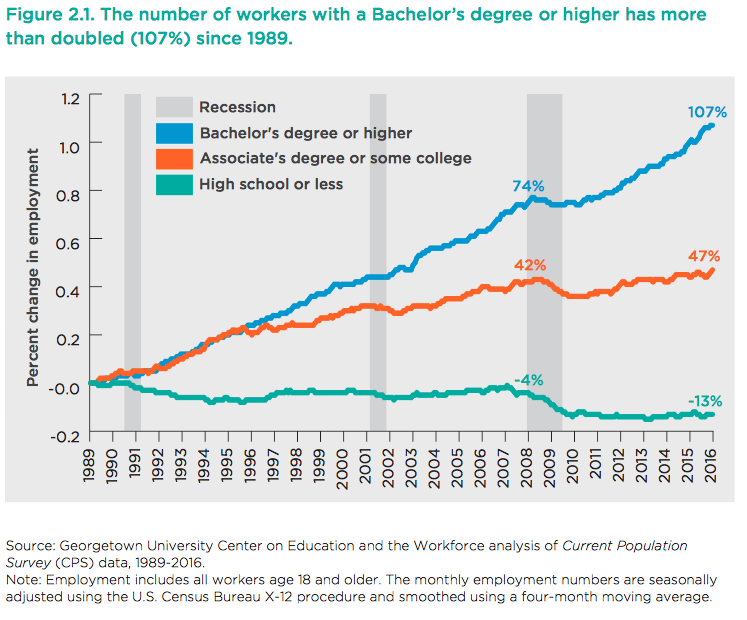For those without a Thiel Fellowship, it still pays to get a degree.
A new study, "America's Divided Recovery: College Haves and Have-Nots," from the Georgetown Center for Education and the Workforce has found that, for the first time, American workers with bachelor's degrees or higher—36 percent of the workforce—outnumber those with a high school diploma or less—34 percent. Those college-educated workers also earn 57 of total American wages. According to the report, the former are snatching up jobs that once went to those with high school diplomas in the wake of 2008's financial collapse and the Great Recession.

The change has come from a shift in the American economy towards automation of jobs previously held by high school graduates—manufacturing, clerical work—towards high-skill jobs that require a college degree—healthcare, government jobs, consulting, the authors write. The report defines high-skill jobs as those in which 50 percent or more workers have a bachelor's degree or higher, and low-skill jobs as those in which 50 percent or more have no education beyond high school. Workers with degrees are increasingly crowding out workers with a high school education from high-paying jobs with long-term benefits such as health insurance and retirement.
The report found that of the 11.6 million jobs added during the economic recovery of 2010-2016, workers with postsecondary education took 11.5 million of them. Of those, bachelor's degree-holders took the lion's share: 8.4 million. By contrast, workers with a high school education lost 5.6 million jobs during the recession and regained less than one percent of them.

The researchers point out that this predominance is part of a larger trend: Since 1989, 73 percent of the 35 million new American jobs have appeared in high-skill fields such as healthcare, management and technology, which require a college diploma or advanced degree. Comparably, jobs for those with associate degrees or some college have increased 47 percent—from 30 million to 43.5 million—and jobs for low-skill workers have declined by 13 percent—7.3 million jobs.



